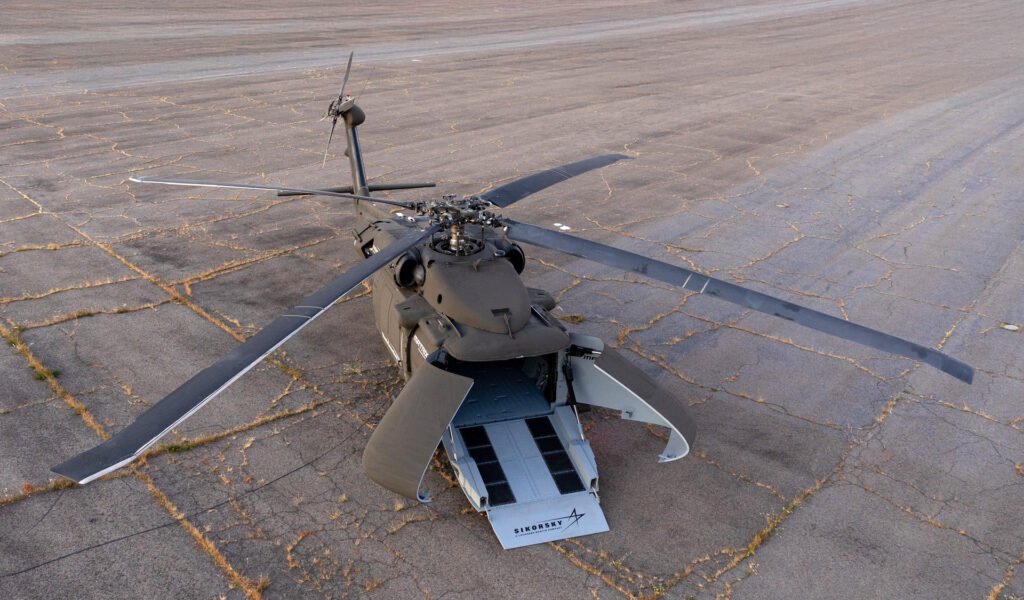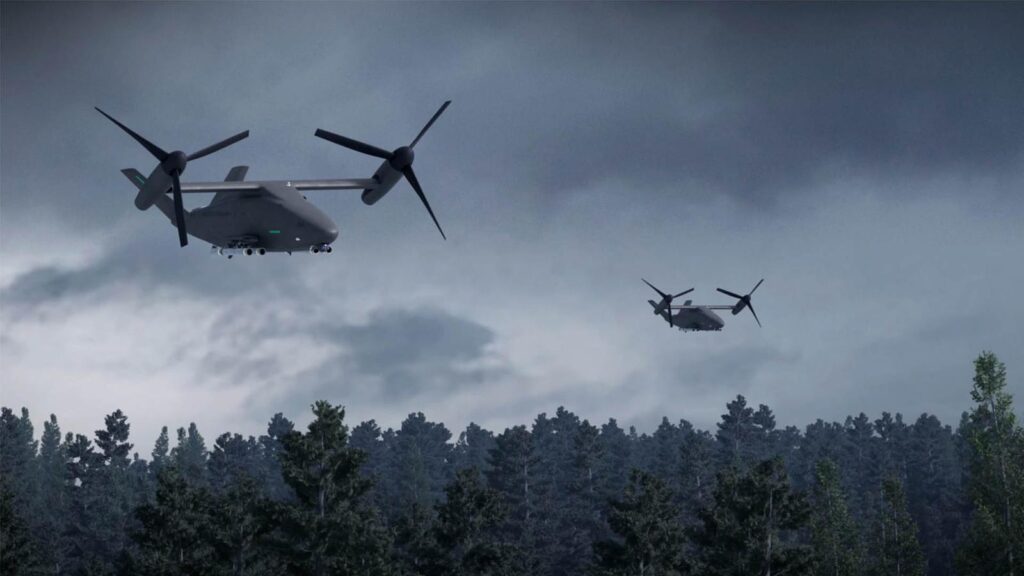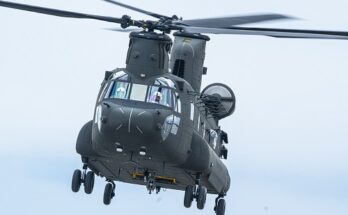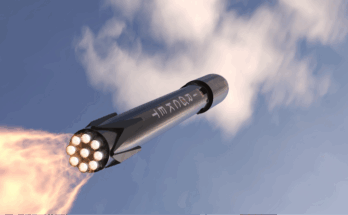
With activity at this year’s Association of the U.S. Army (AUSA) exposition in Washington swirling around C-UAS, Air Launched Effects, and unmanned ground vehicles, the show also delivered on several key Army aviation and industry developments. Forecast International explores three of the leading storylines below.
Contenders for Flight School Next (FSN)
As part of ongoing work to modernize the Army’s helicopter pilot training program, the service is pursuing a cost-effective and contractor-owned approach that includes the selection and fielding of a single-engine helicopter trainer. Competitors are continuing to take shape. Displayed on the floor at AUSA, Bell highlighted the 505, its versatile single-turbine offering.
On day one, Boeing announced its partnership with Leonardo for the FSN bid. The airframers will propose the AW119T helicopter, noting the successful delivery of 130 units of the derivative TH-73A Thrasher for U.S. Navy advanced rotary-wing training. Army officials plan to consider and evaluate FSN bids next year.
FI’s Thoughts: Following a series of Army aviation mishaps in recent years, discourse has focused on strengthening pilot experience and fundamentals in the training pipeline. Some officials have argued that the current twin-engine UH-72A Lakota trainer is too advanced to impart critical “stick and rudder” skills—or more accurately—cyclic and pedal skills to students. Consider this as, even if only in the minds of old-school instructors, an important factor in selecting a new platform.
While the jury will be out for some time on the Navy’s long-term satisfaction with the TH-73, it’s notable that the sea service opted for a Leonardo platform after a storied 57-year run with Bell on the 206 variant TH-57 Sea Ranger.
Sikorsky Debuts Unmanned U-Hawk
At the Sikorsky display, the Lockheed-owned prime unveiled its new tablet-controlled U-Hawk built on a converted UH-60L Black Hawk helicopter. The S-70UAS U-Hawk features a front-load ramp and clamshell cargo doors that afford a 25 percent increase in cargo capacity by removing the cockpit crew station and controls.
The aircraft relies on the MATRIX autonomy system that Sikorsky says will allow a “minimally trained operator” to input mission objectives and rely on sensors and algorithms to generate and carry out a safe flight plan. A maiden flight is planned for 2026.
FI’s Thoughts: In concept, this development seems promising to address many of the difficulties of introducing and realizing the integration of uncrewed air systems for utility and logistics purposes. Building upon a proven legacy platform rather than a clean-sheet design offers several advantages.
The long history of the Black Hawk series of aircraft means known parts sourcing and maintenance practices are largely networked across the globe. A modified manned legacy aircraft also brings along similar or exact performance characteristics with respect to range, lift capacity, and mission capabilities with which Army aviation is intimately familiar.
Much will ride on how the U-Hawk flies and performs operationally, but Sikorsky’s advertised 10-month development timeline adds another favorable component to a program that appears to be aiming at the right needs.

Boeing Introduces Tiltrotor Drone Family
Keeping with the UAS storyline, Boeing unveiled a concept line of unmanned wingmen intended to operate alongside Army rotorcraft under the name Collaborative Transformational Rotorcraft (CxR). The intended Group 4 or Group 5 platforms will fly alongside Apache, Chinook, and likely the forthcoming MV-75 tiltrotor aircraft. Boeing says CxR platforms will utilize a single-turbine engine to drive two proprotors and carry payloads to include “advanced sensors, launched effects, and electronic warfare equipment.”
More broadly, this industry movement underscores the Army’s foray into the UAS wingman field. Along the lines of the Air Force’s Collaborative Combat Aircraft (CCA) program, now all major defense service branches are pursuing drone technology to fly with in-service and future manned aircraft.
FI’s Thoughts: Nearly all the major primes have now introduced CCA-like concepts, but designs for the Army will naturally revolve around vertical/short take-off and landing (V/STOL) approaches. Boeing does have experience with tiltrotor aircraft on the jointly developed V-22 with Bell. However, keep in mind that Bell owned the lion’s share of the development of the Osprey tiltrotor design while Boeing tackled more of the fixed-wing components.
At this point, Bell likely leads Boeing on the unmanned tiltrotor front due mostly to work on the Defense Advanced Research Agency (DARPA)-sponsored SPRINT project to explore high-speed runway-independent aircraft technologies. This summer, Bell’s Stop/Fold rotor design beat out a Boeing-backed blended wing design to move forward into the demonstrator build phase. The outcome of the SPRINT program could serve as a harbinger for the direction of DoD unmanned future vertical lift initiatives.
A former naval officer and Seahawk helicopter pilot, Jon currently leads the Military Aerospace and Weapons Systems group at Forecast International. He specializes in current and emerging military fixed and rotary-wing aircraft. With over a decade of experience in military aviation, operations, and education, he forecasts a diverse range of defense and naval systems.
Influenced by his time as a former Presidential Management Fellow and International Trade Specialist at the Department of Commerce, Jon gained insights into government operations and global markets.
Before joining Forecast International, he served as an NROTC instructor and Adjunct Assistant Professor at the University of Texas, teaching undergraduate courses in naval history, navigation, defense organization, and naval operations and warfare.




